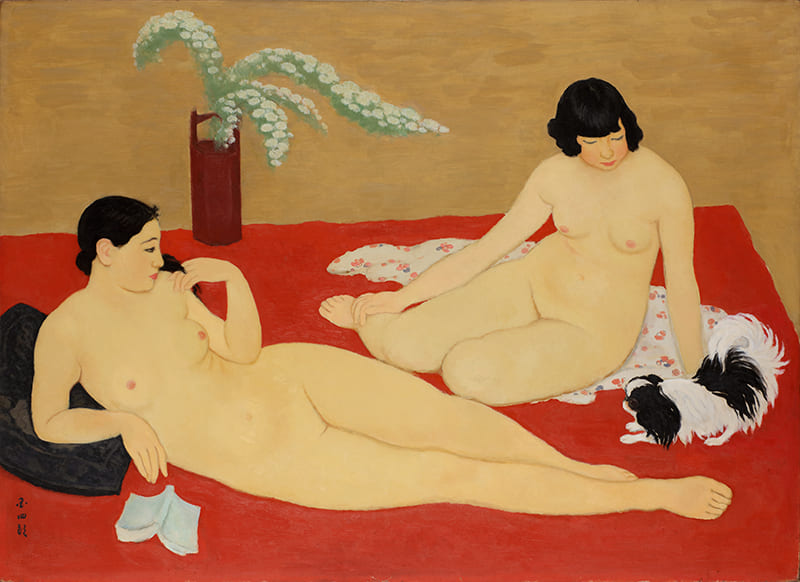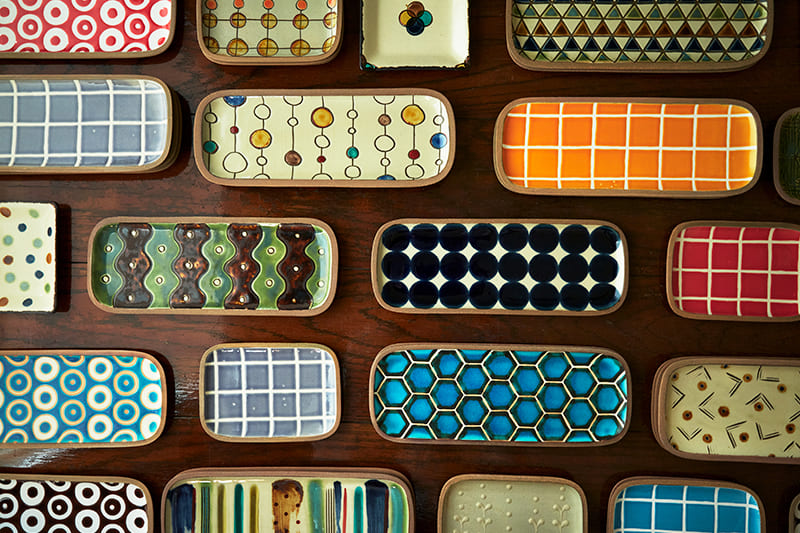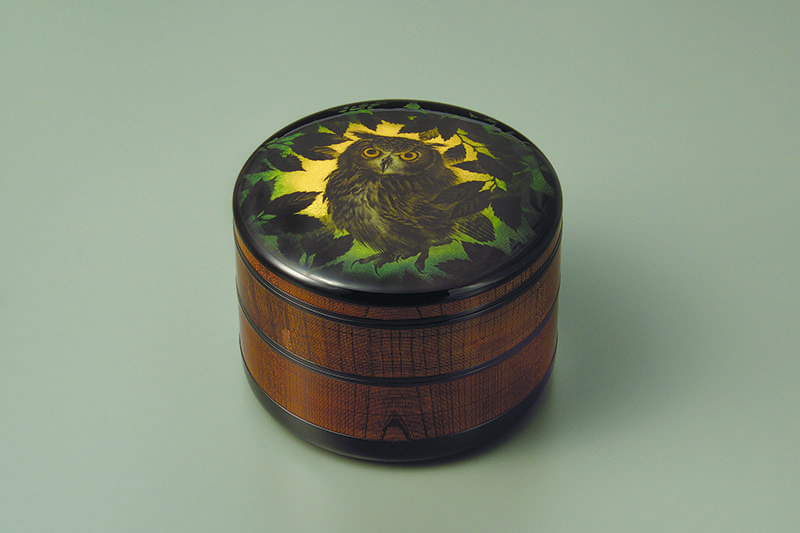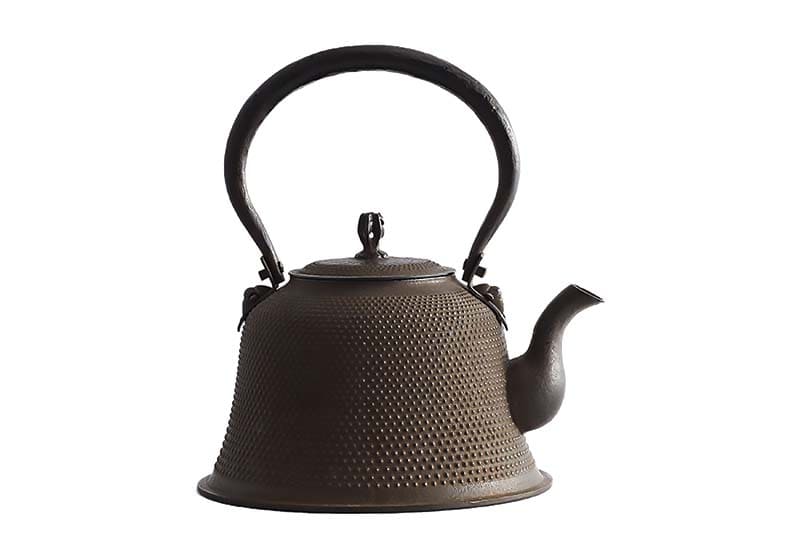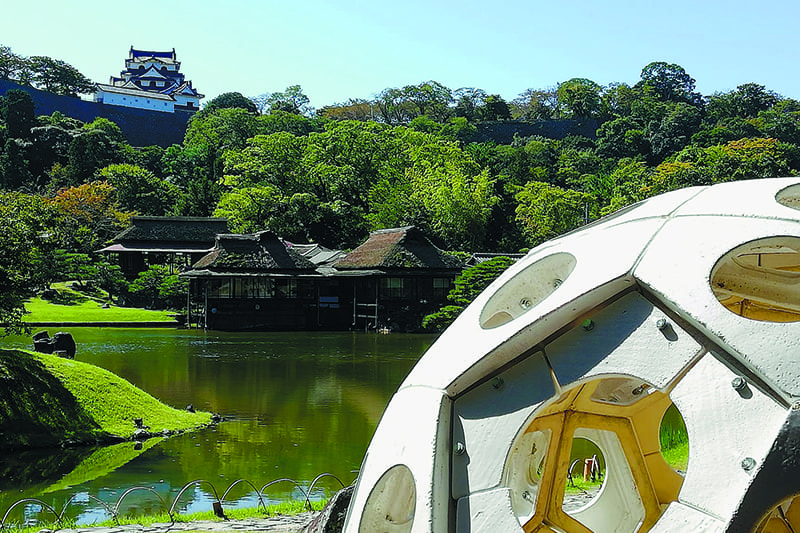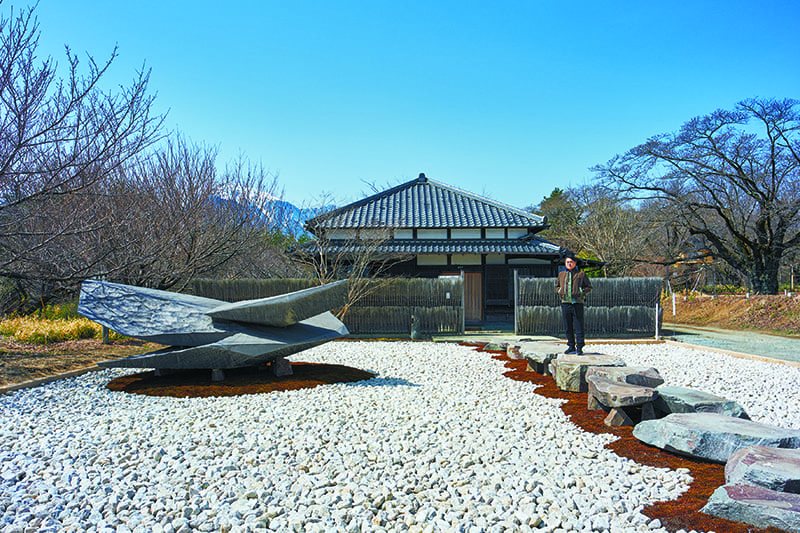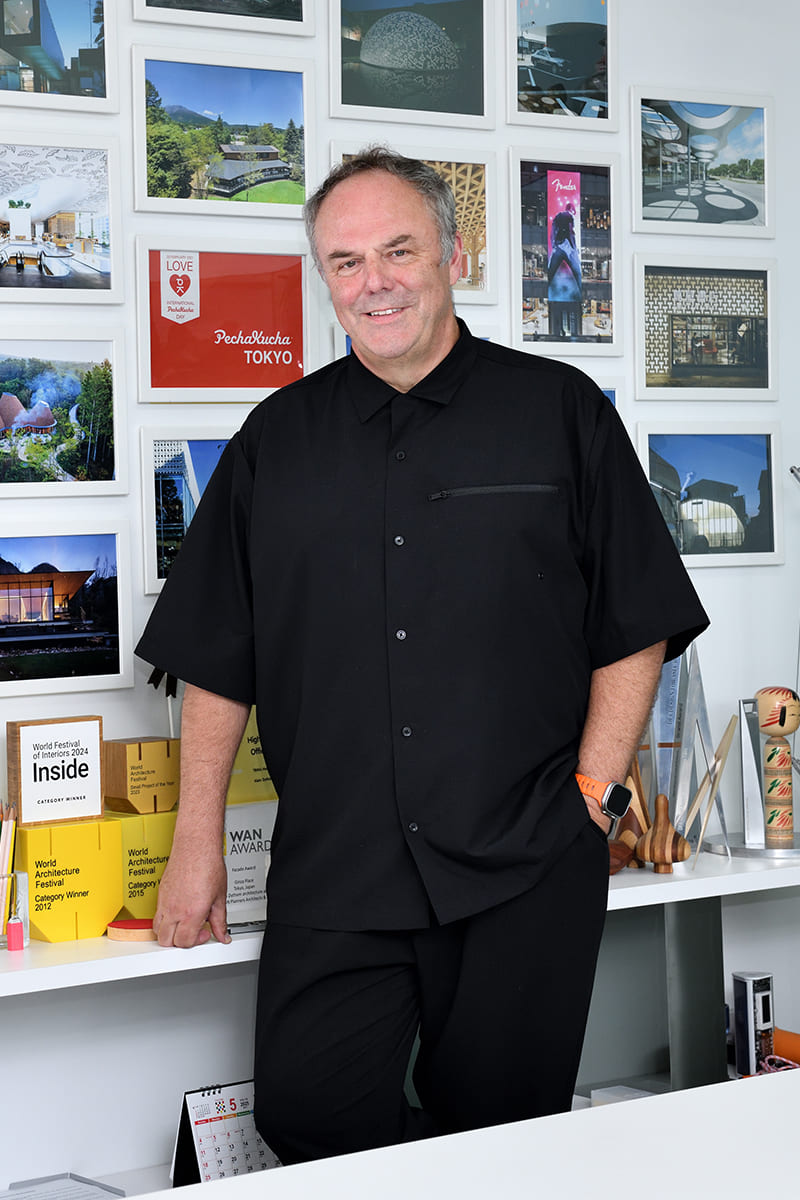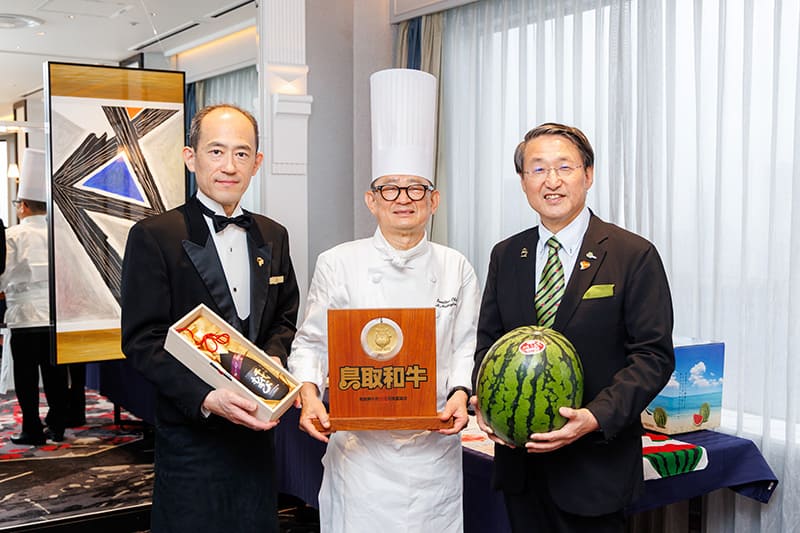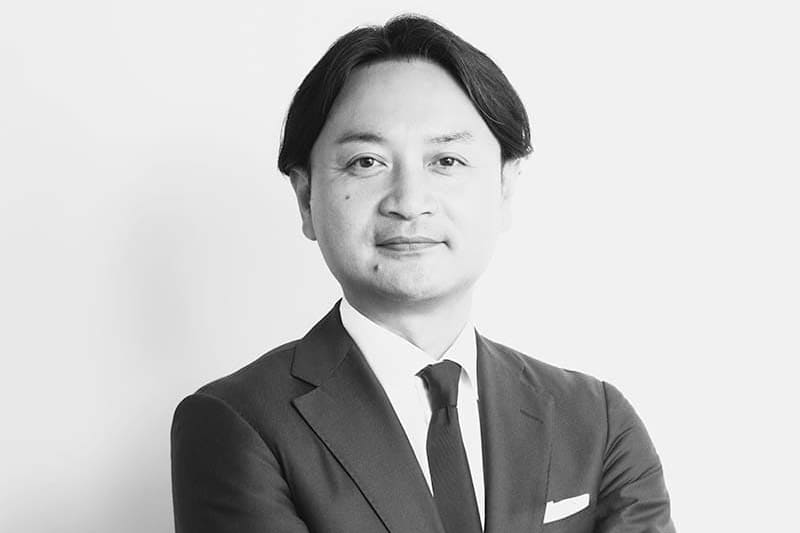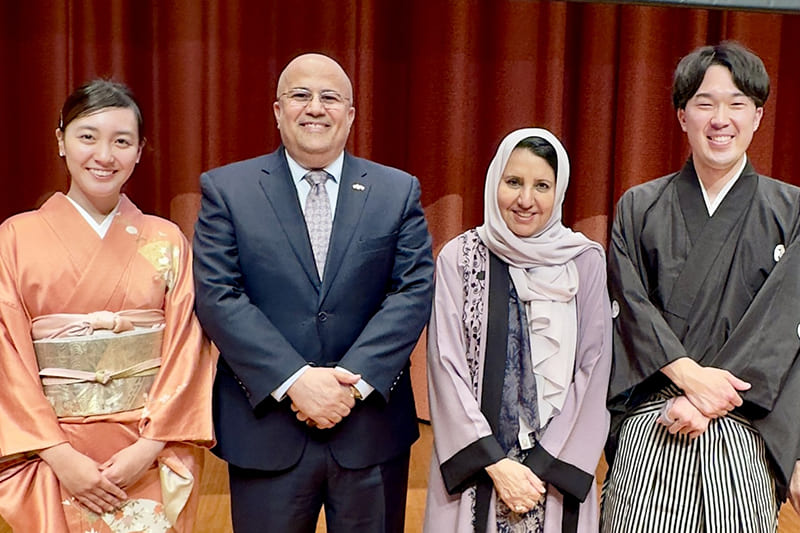February 22, 2024
Prize winner Maki Imoto catches light with glass
CRAFT ARTIST
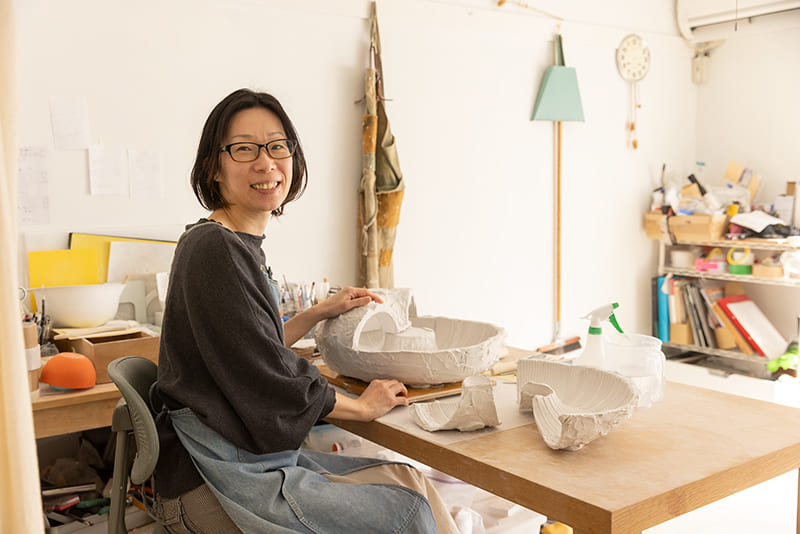
PHOTOS: YOSHIAKI TSUTSUI
Around 4,500 years have passed since humans first discovered how to make glass. Transparent, hard and easy to work, glass’s uses have diversified as new technologies have emerged — from drinking utensils to giant telescope lenses, smartphone touch screens and vaccine vials capable of withstanding extremely low temperatures.
Now, an artist who gives glass textures and shapes that make it almost unrecognizable has been selected as a finalist for the Loewe Foundation Craft Prize 2023. On display at the “Capturing the Light” exhibition at Bonded Gallery in Tokyo’s Higashishinagawa area late last year, Maki Imoto’s works attracted the attention of domestic and international art collectors and fans with their rough textures, shapes that seemed at once organic and inorganic, and their stereotype-defying uniqueness.
Imoto’s work is by no means didactic. Rather, it piques the curiosity, causing you to wonder exactly what it is. And at the same time, it fixes you to the spot. Taking in its unfamiliar texture with your eyes, you sense a stirring in your heart as feelings of hardness and strength are juxtaposed with premonitions of fragility, as though a living thing had been frozen. Even the knowledge that the material in question is glass provides neither respite nor satisfaction. With its defiantly enigmatic appearance, the work stands like a sphinx, affording no simple explanations.
Imoto’s current work is made using a kiln. There are several ways of doing this, but her technique is to make a mold out of plaster, coat the inside with powdered glass and fire it in the kiln. In the same way that cracked window glass can appear cloudy, transparent glass appears white when pulverized, as fine irregularities inside cause light to reflect in various directions. The whiteness of her works, which seem to capture light in their opaqueness, is different from that produced with pigments.
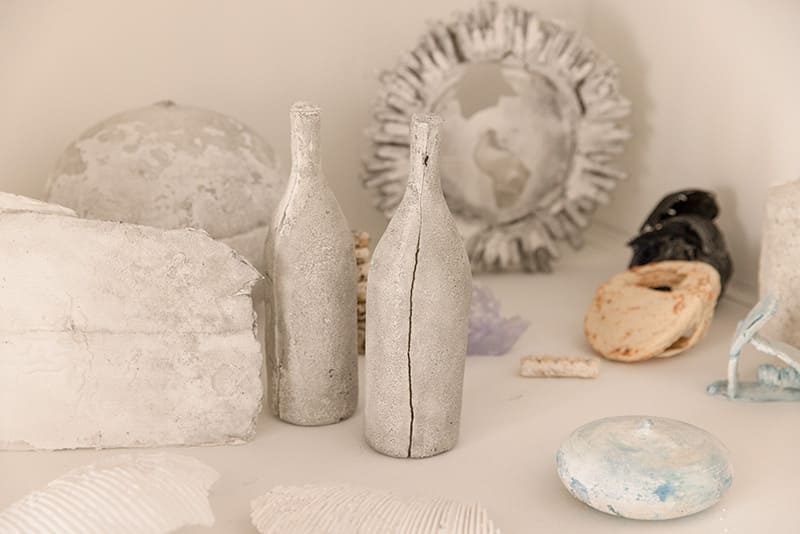
PHOTOS: YOSHIAKI TSUTSUI
At the age of 23, Imoto entered an art university in the Okayama city of Kurashiki, where she was taught by instructors who empathized with and respected the artisans of the mingei (folk crafts) movement and their anonymous but functional vessels. While enrolled in the glass course, she was exposed to various techniques and forms of expression, and as she immersed herself in exploring the diverse aspects of the material itself, she completed the master’s program and studied for a doctoral degree. Though conscious of the dilemma of moving away from the vessel forms that had initially attracted her to the material, she continued to explore. It is this attitude that makes her interesting.
“Especially with the method of using an electric kiln, even if you have put a lot of thought into the work, once it is in the furnace, you can’t touch it. I think I got hooked on that process. Also, the idea of ‘melting’ is important, and there are few materials that transform as easily as glass does in response to gravity. So up until a certain time in my student days, the idea that I could ‘control’ heat and gravity was a big part of my consciousness — what to mix and the proportions, how to make the mold, and how the heat is transmitted in the kiln. I wanted to control it, but at the same time I wanted a material that I wouldn’t know how it might end up. As I continued to experiment, I couldn’t work out which way I wanted to go, so for a while I ended up unable to make anything,” she explained with a laugh.
“Now it feels more like, well, I do what I want to do, so the glass can do it wants. The process of ‘creating’ involves many factors besides one’s own will, such as the materials and the environment. In this way, as you touch the glass, you also change yourself — after going through that process, your original intentions and concepts become a thing of the past.”
The art school where Imoto spent a long time as a student and later as an assistant had a large number of female students, with 60% to 70% being female at the time. At the university in Akita Prefecture where she worked as an assistant, the ratio of female students enrolled in the glass course was as high as 80% to 90%.
“On the other hand, all of the teachers were male,” she said. “I think that might be the case because the people who hire the teachers are also men, but it is clear that there is an imbalance. I think we need to create an environment where women who want to work as artists can feel at ease.”
In 2022, she left the university to focus on her own practice. At first glance, her current situation, in which she can devote herself entirely to her work without having to worry about procuring materials, seems ideal, but she is starting to worry that there may be a mental toll to creating in solitude day after day. That’s why she says she is thinking about relocating her studio. In Okayama, where she spent her student days, she would have a few friends with whom to share the important things. It will be interesting to see how this change — from isolated concentration to a small community — might affect her work.
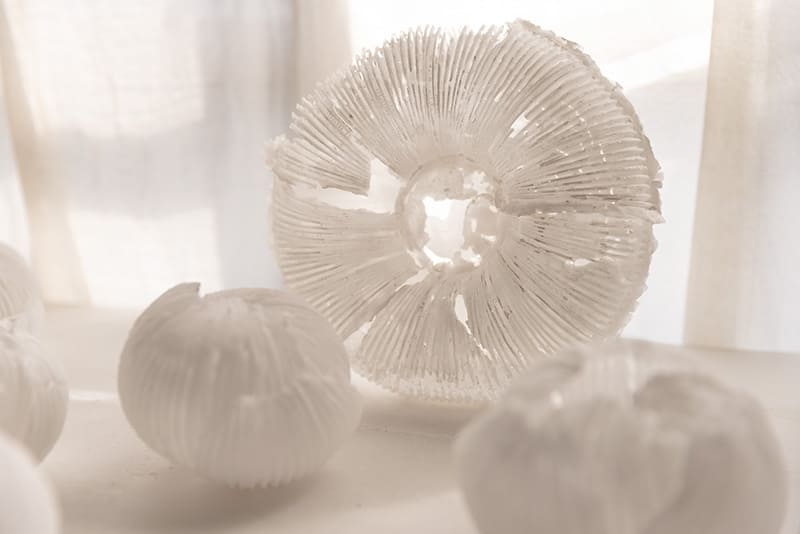
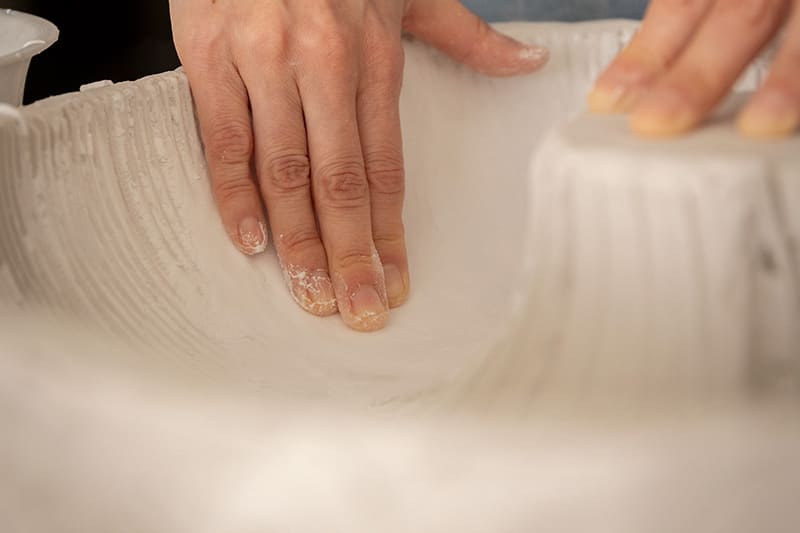
MAKI IMOTO
Imoto was born in Hyogo Prefecture. In 2011, she earned an arts Ph.D. from Kurashiki University of Science and the Arts. In 2023, she was a finalist in the Loewe Foundation Craft Prize 2023. Also in 2023, she held solo exhibitions in Shanghai and Sapporo, and participated in the group exhibition “Capturing the Light” in Tokyo.
LOEWEも賞賛したガラス作品。
人類がその製法を発見してから約4500年。ガラスは、巨大な光学望遠鏡のレンズや、スマートフォンのタッチスクリーン、極低温に耐えるワクチン保存容器など、用途を次々と拡大している。
そんなガラスという素材に、新たな質感、形状を与えた作品により、「LOEWE FOUNDATION Craft Prize 2023」のファイナリストに選出されたのが、井本真紀だ。表面のざらつきさえ感じる質感状など、「ガラス」のステレオタイプから逸脱した表現のユニークさが、国内外のコレクター、アートファンの注目を集めた。
伝統工芸の世界では男性中心のところもある。井本が学生として、その後は助手として長い時間を過ごした美大は6-7割が女性で、助手を務めた大学では、ガラスコース在籍学生の8-9割は女性だった。しかし一方で、教員のほとんどが男性で、ジェンダーバランスの悪さは明らかだった。「美大へ進学したり、卒業後に作家として活動する女性たちが、のびのびできる環境を、私たちがつくらなければとは思います」
Return to Sustainable Japan Magazine Vol. 33 article list page

